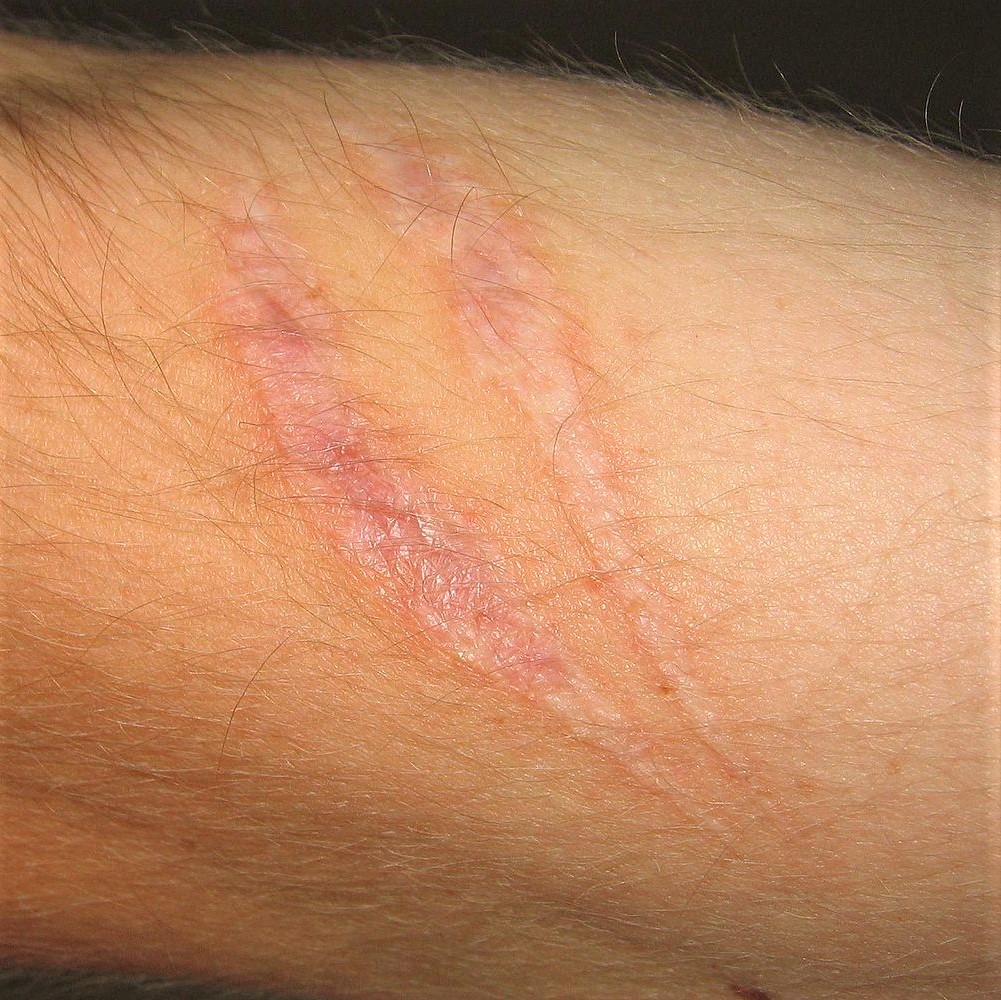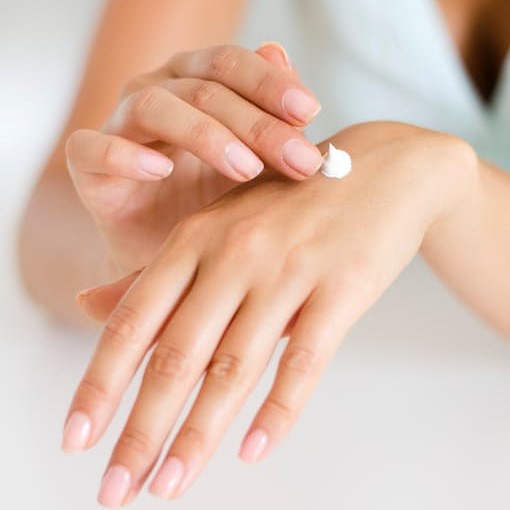30 Mar About Scars
Body image is a subjective, complex concept involving many different perceptions. These assessments include: how you see yourself; how you feel about various aspects of your body (weight and shape for example); how you compare yourself to others; and how you think others see you. For the burn survivor scarring is both a mandatory and demoralizing part of the healing process. Scarring not only limits a burn survivor’s ability to function, but can affect body image dramatically.
 Scars form when the lower layer of skin, known as the derma, has been traumatized. Usually scarring occurs in the first few months after the burn injury. It reaches its peek around 6 months, and will resolve or mature in another 6 to 9 months. Healing can take a long time, but as the scars mature, they lose their former fury — becoming flatter, faded in color, softer and inactive. To defend the skin, the body sends in an army of collagen fiber soldiers to initiate healing. The configuration of these collagen fibers gives the new skin/scar a different texture and appearance.
Scars form when the lower layer of skin, known as the derma, has been traumatized. Usually scarring occurs in the first few months after the burn injury. It reaches its peek around 6 months, and will resolve or mature in another 6 to 9 months. Healing can take a long time, but as the scars mature, they lose their former fury — becoming flatter, faded in color, softer and inactive. To defend the skin, the body sends in an army of collagen fiber soldiers to initiate healing. The configuration of these collagen fibers gives the new skin/scar a different texture and appearance.
Hypertrophic burn scars are the most common complication of a burn injury. In this context, hypertrophic refers to an enlarged area of tissue. These scars develop with a few months after the burn injury and are confined within the area of the original burn injury. Warm to the touch, hypersensitive, and itchy, hypertrophic burn scars are usually located around parts of the body where skin tension and movement are high.
Many treatments are available for treating postburn itch and scar formation from hypertrophic scars. In addition to medications, these include: custom-fit pressure garments, silicone gel sheets worn over the scars; custom-made inserts to be worn under garments and/or bandages that increase pressure and facilitate healing; stretching and massage; and surgical treatments.
Often after a second or third-degree burn, normally flexible tissue is replaced by inelastic, rigid tissue. This condition is called a “contracture.” Contracture burn scars impede movement, particularly when they occur across joints. They are characterized by dryness, stiffness and constriction, resulting in uncomfortable cracking and deterioration.
 There are also many ways to alleviate the discomfort of contractures. Stretching, splinting, and dressing independently are three of the most effective measures suggested for relief. Stretch at least 5-6 times a day. But before you begin any protocol, ask your doctor to recommend a moisturizer. Consider a splinting therapy, a method whereby a cast or splint is gently but firmly applied to hold your scar in a stretched position. And finally, do as much as you can on your own to dress and groom yourself. It will take longer than you like, but returning to movements familiar to you will be very beneficial.
There are also many ways to alleviate the discomfort of contractures. Stretching, splinting, and dressing independently are three of the most effective measures suggested for relief. Stretch at least 5-6 times a day. But before you begin any protocol, ask your doctor to recommend a moisturizer. Consider a splinting therapy, a method whereby a cast or splint is gently but firmly applied to hold your scar in a stretched position. And finally, do as much as you can on your own to dress and groom yourself. It will take longer than you like, but returning to movements familiar to you will be very beneficial.
And then there’s the itch. The oil glands in the body keep skin from getting too dry. But damage to these glands from a burn injury causes dry skin and subsequent itching. Keeping the skin moist is the best defense against itching. Initially, moisturizers are best gently applied in thin layers to the fragile skin. Bathing, hot showers in particular, remove essential natural oils from the skin. Re-moisturize well after showers. Apply the moisturizer to all healed areas throughout the day.
Remember that scars are always more sensitive to sun and chemicals. Scars that are still red are still healing and will burn easily. The best thing to do is avoid exposure to sunlight. Try to schedule outdoor plans during the early morning or late evening hours, never during the middle of the day or afternoon. The same common sense measures you took before the burn injury still apply, but with a heightened sense of awareness. Apply a sunscreen with a minimum 15 SPF, and reapply it frequently while you are outside. Wear protective clothing.
Both a friend and a foe in the healing process, scarring is the welcome sign of regeneration and renewal for the burn survivor. You must take proactive ownership of your care and recovery. Ask your medical team about any concerns you may have about any protocol, and report any discrepancies immediately.
For more information about burn injuries, please visit our website www.burnsurvivor.com
To contact attorney Robert A. Brenner directly call 800-669-7700 or email [email protected]
To learn more about attorney Robert A. Brenner, please visit his website www.brennerlaw.com
